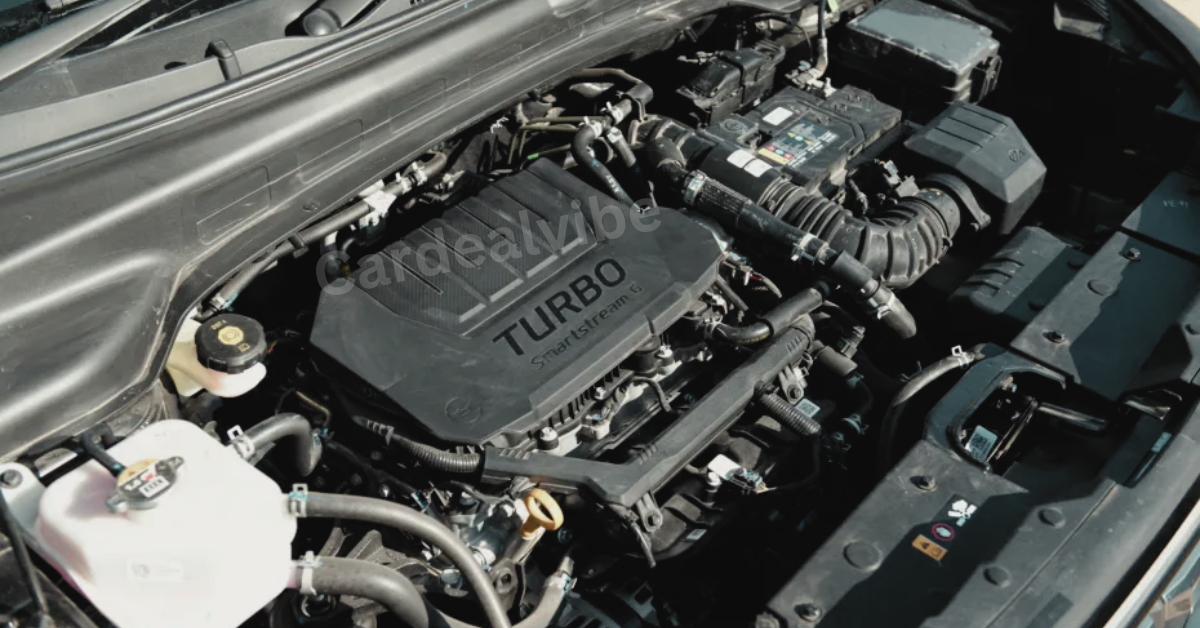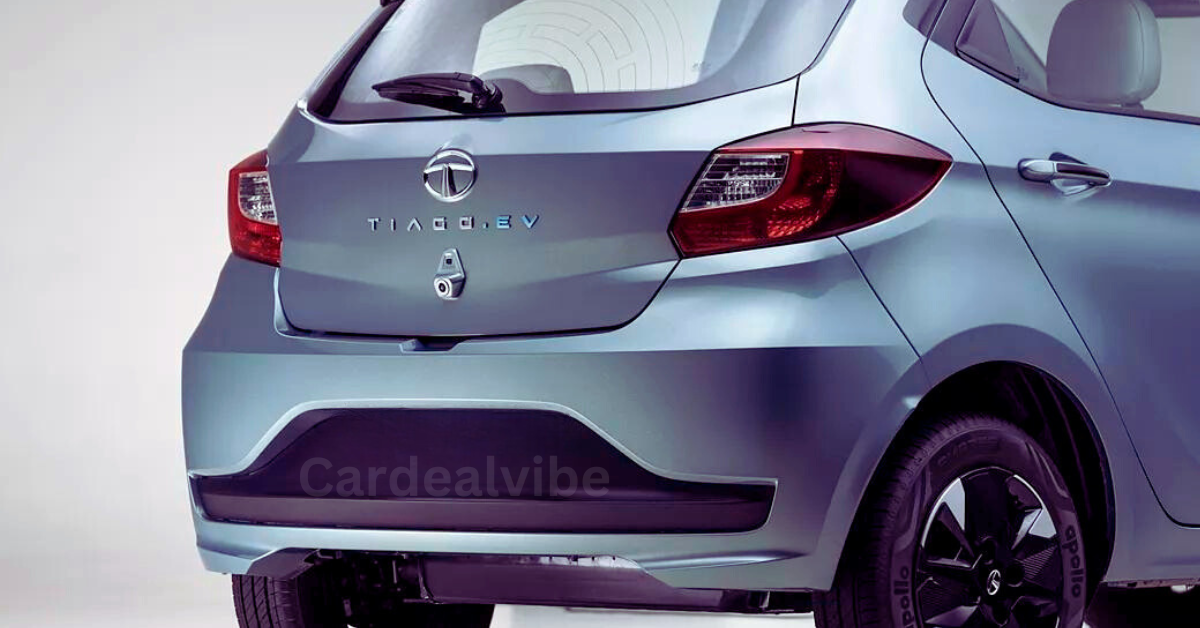Hyundai Venue N Line vs. Hyundai Creta N Line: A Comparison of Their Dissimilarities and Similarities
The Hyundai i20 N Line, Hyundai Venue N Line, and the most recent model, the Hyundai Creta N Line, make up the current Hyundai N Line portfolio in India. Here are some similarities and differences between the two sportier Hyundai SUVs if you’re thinking about choosing one
Exterior Design

The “N Line” emblems on the outside, the red highlights throughout, the sportier alloy wheels, and the dual-tip exhaust are some of the similar design aspects shared by the Venue N Line and Creta N Line models. Red brake calipers, modified bumpers, and the N Line-only Thunder Blue paint option with a black roof are also included for both.
The N Line models and the standard models they are based on differ somewhat in terms of visual differentiation, though. While the Venue N Line features a slightly modified grille, it otherwise looks much like the basic Venue. Conversely, the Creta N Line features a redesigned grille design on its fascia.
The Creta N Line has larger 18-inch wheels, while the Venue N Line has 16-inch dual-tone alloy wheels.
Cabin

The inside of the Venue N Line and Creta N Line is all black, with red accents around the gear lever console, on the door pads, and on the dashboard. Hyundai is also providing the two N Line variants with contrast red stitching on the gear shifter, steering wheel, and seat fabric. The same 3-spoke steering wheel, leatherette upholstery, N Line-specific gear shift, and metal brake and accelerator pedal finishes are also included with both SUVs
Features

Some similar features shared by the Hyundai Venue N Line and Creta N Line include wireless phone charging, push-button start/stop, auto-LED projector headlights, a dual-camera dashcam, six airbags, electronic stability control (ESC), and advanced driver assistance systems (ADAS).
The Creta N Line has dual-zone climate control, while the Venue N Line has auto air conditioning. For these functions, the latter has two 10.25-inch monitors, while the former has a single 8-inch touchscreen and a semi-digital driver display.
Extra equipment including an 8-speaker Bose sound system, heated front seats, an 8-way motorized driver seat, and a panoramic sunroof are also included with the Creta N Line. In addition, a 360-degree camera adds even more safety technology.
Powertrain Selections
The Creta receives a larger engine than the larger SUV, even though both N Line SUVs have turbo-petrol engines with a choice of manual or dual-clutch automatic transmission options:
| Specification | Hyundai Venue N Line | Hyundai Creta N Line |
| Engine | 1-litre turbo-petrol | 1.5-litre turbo-petrol |
| Power | 120 PS | 160 PS |
| Torque | 172 Nm | 253 Nm |
| Transmission | 6-speed MT, 7-speed DCT* | 6-speed MT, 7-speed DCT |
Variants, Prices, and Competitors
| Variant | Hyundai Venue N Line | Hyundai Creta N Line |
| N6 MT | Rs 12.08 lakh | – |
| N6 DCT | Rs 12.87 lakh | – |
| N8 MT | Rs 12.96 lakh | Rs 16.82 lakh |
| N8 DCT | Rs 13.75 lakh | Rs 18.32 lakh |
| N10 MT | – | Rs 19.34 lakh |
| N10 DCT | – | Rs 20.30 lakh |
The Venue N Line and Creta N Line have the same nomenclature, consisting of two broad versions that begin with the letter N and end with a number. But because the Venue is positioned lower than the Creta, the former’s versions begin at a lower number and the latter climbs up.
The Mahindra XUV300 TurboSport and the Kia Sonet GT and X-Line versions are the direct rivals of the Venue N Line. Conversely, the Volkswagen Taigun GT versions and the Kia Seltos GTX+ and X-Line variants face up against the Hyundai Creta N Line.
Also Read: India’s Top 5 Cheapest Vehicles With A Panoramic Sunroof
India’s Top 5 Cheapest Vehicles With A Panoramic Sunroof
When looking for a new car, one of the things that people want the most nowadays is a panoramic sunroof. Although automobiles starting far under Rs 10 lakh (ex-showroom) now come with a single-pane sunroof, the panoramic unit remains a luxury feature exclusive to the compact SUV market. The top five inexpensive vehicles available in India with panoramic sunroofs are listed in this report of India’s Top 5 Cheapest cars.
MG Astor
Select- Rs 12.98 lakh

When purchasing the Select version of MG’s small SUV, the Astor comes with a panoramic sunroof. Among the five Astor versions, the Select variant is the mid-spec choice and comes only with a 1.5-liter naturally aspirated engine that produces 110 PS.
Hyundai Creta
S(O)- Rs 14.32 lakh

The well-liked Hyundai Creta small SUV is an additional choice with a panoramic sunroof. It is offered with the Creta S(O) version, which is placed above the mid-spec S variant. Nevertheless, the sunroof’s voice-activated features are only accessible with the more expensive SX model.
2024 Kia Seltos
HTX- Rs 15.20 lakh

When the Seltos, the brother of the Creta, underwent a redesign in the middle of 2023, a panoramic sunroof became an option. It is available from Kia starting with the Tech Line SUV’s mid-spec HTX version. With this version, you have the option of a 1.5-liter normally aspirated engine or a 1.5-liter diesel engine in India’s Top 5 Cheapest Cars.
Maruti Grand Vitara
Alpha- Rs 15.51 lakh

A panoramic sunroof is available with the top-of-the-line Alpha model of the Maruti Suzuki Grand Vitara SUV. This version has a standard 1.5-liter gasoline engine with 103 PS and mild hybrid technology. It can be paired with a 5-speed manual or a 6-speed automatic transmission.
Toyota Urban Cruiser Hyryder
V- Rs 16.04 lakh

Together with a panoramic sunroof, the top-of-the-line V model of the Toyota Urban Cruiser Hyryder rivals the Grand Vitara. It shares a 1.5-liter gasoline engine with 103 PS and mild hybrid technology, similar to the Grand Vitara. It may be had with a 5-speed manual or a 6-speed automatic transmission.
Recall Information Released for Hyundai Verna and Creta Petrol-CVT Units
- Hyundai 2024 has consolidated the recall of 7,698 Verna and Creta vehicles.
- A possible problem with the electronic oil pump controller is the reason for the recall.
- It only applies to models with the 1.5-liter naturally aspirated gasoline engine and the CVT automatic transmission.
- Whether it is safe to drive the impacted vehicles in their current state is still unknown.
- Owners seeking further information should reach out to the closest Hyundai dealer or give its customer care a call at 1800-114-645.
In India, Hyundai 2024 has declared a voluntary recall affecting 7,698 Verna cars and Creta SUV models. The 1.5-liter normally aspirated petrol engine versions with the CVT automatic transmission are included in the recall.
Further Information About The Recall
An electronic oil pump controller problem that could have an impact on the electronic oil pump’s functionality has prompted the recall. From February 13, 2023, until June 06, 2023, these impacted units were produced.

It’s not verified, but we think Hyundai 2024 dealerships will probably get in touch with each owner of an impacted vehicle directly to ask them to do the necessary servicing as part of the recall. If your Verna or Creta is part of the recall, you may also check with your local Hyundai dealer or give its customer service line a call at 1800-114-645.
Can You Keep Using It?
Hyundai has not stated whether or not the impacted SUV and sedan models are safe to drive as is, but we advise you to find out as soon as possible if your car is covered by the recall. If so, schedule an inspection right away to maintain your car in top condition.
Different Powertrains

The 1.5-liter normally aspirated powerplant previously mentioned is not the only option available for the Creta and Verna; there are also 1.5-liter turbo-petrol and 1.5-liter diesel engines. These engines come with three different gearbox options: a 6-speed torque converter automatic, a 7-speed DCT (dual-clutch automatic), and a 6-speed manual.
Read More On: Tata Tiago EV To Tata Nexon EV
These Two New Features Will Increase Convenience For The Tata Tiago EV
- The more advanced XZ+ Long Range and XZ+ Tech Lux Long Range models both support the 45W fast’ charger.
- The only model that offers auto-dimming IRVM is the fully loaded XZ+ Tech Lux Long Range.
- A reversing camera, auto air conditioning, and a 7-inch touchscreen are further goodies.
- There are two battery packs available for the Tiago EV: 19.2 kWh (250 km) and 24 kWh (315 km).
- The price range (ex-showroom, India) is Rs 7.99 lakh to Rs 11.89 lakh.
There has been a slight update to the Tata Tiago EV’s equipment package, bringing in a few new features. Tata has introduced a 45W front USB Type-C smartphone charging connector and an auto-dimming IRVM (internal rearview mirror). The XZ+ Tech Lux LR and the higher-spec XZ+ Long Range (LR) both have a USB connector for quick charging. However, Tata is limited to supplying the auto-dimming IRVM on the XZ+ Tech Lux LR.
Top Features Of The Tata Tiago EV

The Tiago EV also has cruise control, an 8-speaker sound system, auto climate control, a 7-inch touchscreen infotainment system, and push-button start/stop in addition to these additional features. Two front airbags, a TPMS (tire pressure monitoring system), and a reversing camera make up its safety net.
Offers for Electric Powertrain
The Tata Tiago EV comes with the following two options for battery packs:
| Specification | Medium Range | Long Range |
| Battery Pack | 19.2 kWh | 24 kWh |
| Power | 61 PS | 75 PS |
| Torque | 110 Nm | 114 Nm |
| MIDC-claimed range | 250 km | 315 km |
There are four different ways to charge a Tata electric hatchback: a 15 A socket charger, a 3.3 kW AC charger, a 7.2 kW AC charger, and a DC rapid charger.
- The charging schedules for the two Tiago EV batteries are as follows
- 15. A Socket Charger: 19.2 kWh in 6.9 hours, 24 kWh in 8.7 hours
- AC power of 3.3 kW Charger: 19.2 kWh in 5.1 hours, 24 kWh in 6.4 hours
- 7.2 kW AC Charger: 19.2 kWh in 2.6 hours, 24 kWh in 3.6 hours
- Fast charging DC: 10–80% in 57 minutes for both
Price And Rivalries

Prices for the Tata Tiago EV range from Rs 7.99 lakh to Rs 11.89 lakh (ex-showroom, all of India). In addition to challenging the MG Comet EV, it also serves as a substitute for the Citroen eC3.
Also Read: Audi Q6 E-Tron Electric SUV Features










